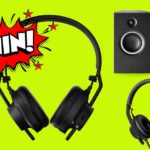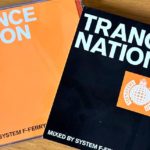
I think we can all agree that music is a powerful and wonderful thing, liberating both the mind and body. In my experience, the cleaner and purer the music, the deeper one’s consciousness can engage with it. Pure vs distorted sound are as different to the mind as 2D vs 3D images are to the eyes. We have a duty of care to our listeners to ensure that everything in the audio chain is as clean and transparent as possible. Distortion hurts and drives people away from your music, particularly in today’s clubs where sound systems are loud.
So more than ever, it’s important to understand what’s involved, in order to strive to deliver a clean signal when you’re DJing or producing music. That’s what these 7 Rules For Great DJ Sound Quality are designed to help you with.
7 rules for great DJ sound quality
1. Keep everything out of the red
“Red” is there for a reason. Don’t rely on your gear to compensate for your ignorance of this; do it yourself. That means adjusting the gain controls so the individual channel meters aren’t in the red; making sure your master output meters aren’t in the red; and making sure, if you can, that the amplifiers in your venue aren’t in the red.
If you’re lucky enough to DJ with a sound engineer, respecting this one simple rule is probably going to be enough to get him 100% onside – and when it’s time to go louder, he’ll help you do it right, not hinder you by cutting your already-distorted efforts back down to size at his end.
2. If you can, use lossless rather than lossy audio files
By lossless I mean experimenting with WAV, FLAC or other lossless formats over “lossy” formats like MP3 or AAC. When you’re ripping your tracks to hard drive, at least try these formats instead. No, it’s not always as straightforward as MP3 or AAC (metadata, compatibility), but that doesn’t stop you checking what is compatible with your library software and DJ software of choice, seeing which formats let you have the metadata you’re interested in, and doing some experimenting.

DJ software is getting better at playing more formats, and with digital storage ever-increasing and transfer rates equally getting faster, there may be a day soon when nobody uses MP3s and everyone uses lossless audio. As someone with an investment in great DJ sound quality, wouldn’t you like to be on that train early rather than late?
Of course, there are times when you can’t or don’t have a lossless version of a tune. I’m not saying never use MP3s. More, I’m saying be aware that there is a difference, and listen out for it. At least, give it a go and make your own mind up. I demonstrate these differences as part of my job, and when given a straight comparison, most people are surprised.
3. Ensure any samples you use are as clean and high resolution as possible
If you make mashups, re-edits, or your own productions, there’s no point mastering them as pristine lossless files when you used a load of low bit-rate MP3s as your building blocks! So when you start making, as well as playing, beats, make sure you’re particular about keeping the quality of your sources as high as possible. A finished mashup, re-edit, remix or own production is only ever going to sound as good as the worst-sounding sample it contains.
If you are “borrowing” far and wide to come up with new and exciting sounds of your own, I’d say stick to CD quality as your minimum – and again, no MP3s.
4. Keep your sound chain as simple as possible
Think of your sound quality like looking at a beautiful scene through glass. With analogue sound in years gone by, you maybe looked through two or three panes of glass to “get” to the view, and they were relatively easy to keep “clean”.

With digital, you’ve now got, say, 10 panes of glass (it’s certainly many, many more than simple old analogue). Now, if each of those panes is scrupulously kept clean, the view will be just fantastic. But it only takes one pane to be dirty, and the view is ruined, even if the other nine are all fine.
So what are these “panes”? They are the stages in an audio signals progress through software and hardware. For instance the extra layers of processing in your DJ or production software: things like auto limiting, auto gain, effects and so on. The key thing here is to uncheck and unplug all unnecessary features that you’re not using in your software, and if you’re producing, to keep plugins to a minimum. I’m not saying never use this stuff; just use it mindfully, and switch it off when you aren’t using it. And listen out for the differences.
5. Use a good quality audio interface
Digital files need converting into analogue signals in order to be amplified and sent to loudspeakers so we can hear them. The job falls to your audio interface, or sound card, and specifically to the “digital to analogue converter” within that device. (Some sound cards also have “analogue to digital” converters in them too, to turn sound into digital.)
If you use a DJ controller, you may or not realise that you almost certainly have one of these built-in to it. You may also have a separate one, though: No matter. You use one somewhere along the line, that’s the point. Traktor sound cards are pretty good, Serato/Rane devices have upped their game of late and also sound OK – but many of today’s audio interfaces struggle to get past acceptable and some are downright awful. So if you want to improve the sound of a cheap controller, getting a decent sound card is the way to do it.
For me, easily the best value sound card on the market for DJs is the Echo Audio AudioFire 4. In tests, this outperforms sound cards costing thousands, which is staggering for a relatively budget unit. Unfortunately it’s Firewire only, but Echo Audio has recently launched a USB card, the Echo 2. I’ve not heard it yet, so watch this space for an update.
6. If you’re producing tracks, avoid over compression on the final mix
Compression is what makes the quiet bits louder and the loud bits quieter, in order to give more overall volume in a mix, but at the expense of dynamics (because now, there’s not so much difference between the loud and quiet bits).

Sure there’s a place for compression, especially in dance music; whole sounds have been built around the creative use of it. But again, using it mindlessly can make for downright fatiguing listening. And at its worst, it can actually make music clip and distort.
There’s a movement called The Loudness War that has noted and championed this cause for a long time, and it’s worth restating it here: Compression is the enemy of good club sound. A decent sound system in a club doesn’t need it, and a well-mastered track that isn’t over-compressed will always sound better than one that is.
7. Watch the keylock!
This one is so widespread, it deserves its own point. If you use keylock, master tempo, or whatever it happens to be called on your controller and software, know that this is extremely disruptive to audio quality. (For the uninitiated, this is where you “lock” the pitch while altering the tempo, or vice versa, of a track or sample). It’s a useful tool, and I’m not saying don’t use it – but just do it mindfully.
Best to keep it to a minimum – use it for tracks that would be pretty close anyway to each other anyway, and lose it as quickly as you can. Don’t keep pitch shifting on all the way through a track; return to pitch zero and turn it off.
Finally…
What I’ve outlined above are objectives, they’re the ideal. I make no apologies for caring about them, though: as a species, if we hadn’t striven for excellence, we’d all still be living in caves! But then again, I do realise that a life half-lived is better than none.
I’m not one of these people who says “analogue is always better” – we are where we are, and despite the debate over analogue vs digital still rolling on 20 years later, this is a digital age we’re in.
I actually think that digital sound, done properly, is better than analogue – but you need to know how to do it properly and find the software and equipment made by people who know how to do it properly. So what I’m asking you to do is be aware that these things do matter, and to investigate them.
• Tony Andrews runs Funktion One, and is a global evangelist for better sound. You can watch him expounding on some of what he’s written here today in this TEDx talk.
Have you had issues with poor digital files? What steps do you take to ensure your digital DJ sets sound as good as possible? Do you think this is a growing problem, or are things getting better? Please share your thoughts in the comments.








